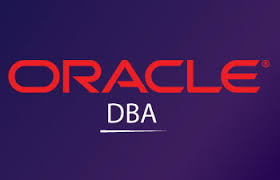
ORACLE DBA TRAINING COURSES
Learn about SQL Server Database Administration from us to get valuable tips, tutorials, that Provides DBA Training in My SQL Starting with very basics to advance level which will be an added advantage that will help you gets hired by best companies.
Overview:
Oracle DBA (Database Administrator) is a key person responsible for the installation, configuration, upgrade, administration, monitoring, and maintenance of databases in an organization. The main role includes the design and development of database strategies, system monitoring and improving the performance of the database and capacity and planning for future expansion requirements. They plan to coordinate and implement security measures to safeguard the database.
Training Objectives of DBA:
Oracle DBA provides the essential SQL skills that allow developers to execute the queries against single and multiple tables, manipulate data in tables and creating database objects. Students will also learn how to use the advanced features of SQL in order to execute the query and manipulate data within the database, use the dictionary views to retrieve metadata and create reports about their schema objects.
Target Students / Prerequisites:
Students must be familiar with data processing concepts and techniques.
Introduction
Identify the Oracle product
Describe the basic concept of a relational database
Installing Oracle Database 10g software
System requirements
Use Oracle Optimal Flexible Architecture (OFA)
Install software with the Oracle Universal Installer
Create an Oracle database
Oracle Database Architecture
Oracle instance architecture
Use the Database Creation Assistant
Controlling the database
Manually configure the Oracle 10g EM dbconsole
Start and stop the agent
Start and stop the enterprise manager database console
Start and stop the listener
Startup and shut down the database
Storage Structures
Defining the tablespaces and data files
Create tablespaces
Manage tablespaces
Obtain tablespace information
Create and manage tablespace using oracle enterprises manager
Administering users
Create and manage database user accounts
Create and manage roles
Grant and revoke privileges
Oracle Database Security — Only Theory
Apply the principal of least privilege
Manage default user accounts
Implement standard password security features
Oracle Net Services
Understand Oracle Net concepts
Use Oracle Net Manager to create and configure listeners
Use the Oracle Net Manager to configure the client and middle-tier connection
Use TNSPING to test Oracle Net connectivity
Performance Monitoring
Gather optimizer statistics
View performance metrics
Monitoring and Managing Memory
Oracle Memory Structures
Automatic PGA Memory Management
Using the Memory Advisor
Using Automatic Shared Memory Management to avoid long running query issues
Monitoring and Resolving Lock Conflicts
Detect and resolve lock conflicts
Manage deadlocks
Diagnostic Sources
The Alert Log
Viewing Alerts with EM
Alerts Notification —– Only Theory
Editing Thresholds —– Only Theory
Trace Files
Proactive Maintenance: Objectives — Only Theory
Set warning and critical alert thresholds
Collect and use baseline metrics
Use tuning and diagnostic advisors
Use the Automatic Database Diagnostic Monitor (ADDM)
Automatic Storage Management —- Only Theory
ASM Concepts
ASM General Architecture
Creating an ASM instance
Creating tablespaces that use ASM storage
Viewing ASM information
Migrating a tablespace to use ASM storage.
Undo Management — Only Theory
Monitor and administer undo
Configure undo retention
Guarantee undo retention
Use the undo advisor
Backup and Recovery — Only Theory
Describe the basics of database backup, restore and recovery
List the types of failure that may occur in an Oracle Database
Describe ways to tune instance recovery
Identify the importance of checkpoints, redo log files, and archived log file
Managing Data
Manipulating data through SQL
Using Import
Using Export
Database backups
Configure ARCHIVELOG mode
Create consistent database backups
Back your database up without shutting it down
Create incremental backups
Automate database backups
Monitor the flash recovery area
Managing schema objects
Create and modify tables
Define constraints
View the attributes of a table
View the contents of a table
Create indexes and views
Database Recovery
Recover from loss of a control file
Recover from loss of a redo log file
Recover from loss of a data file
Enroll For Course Now